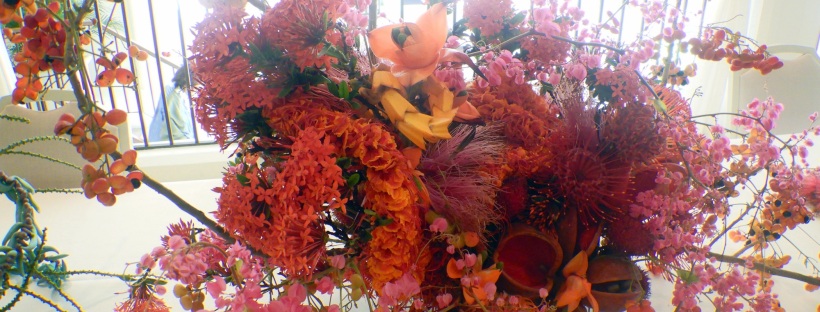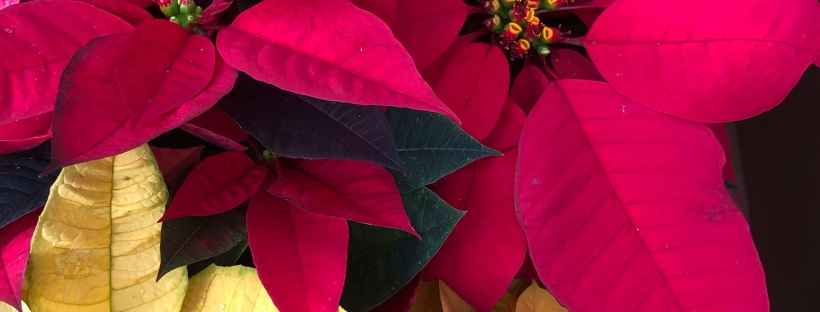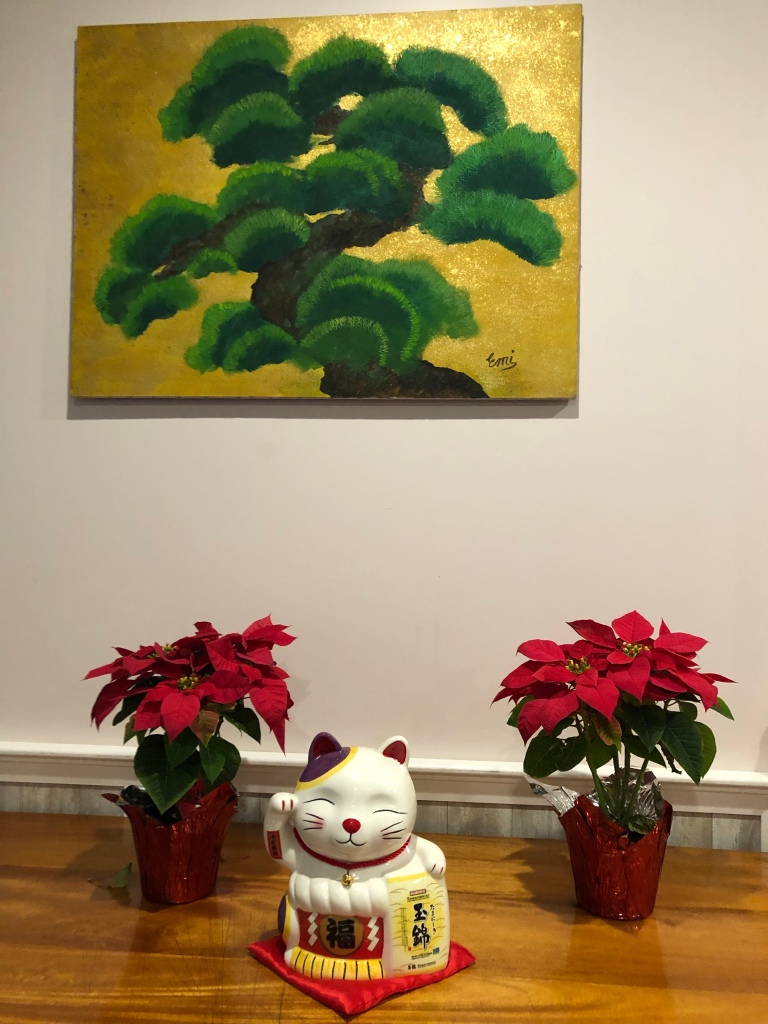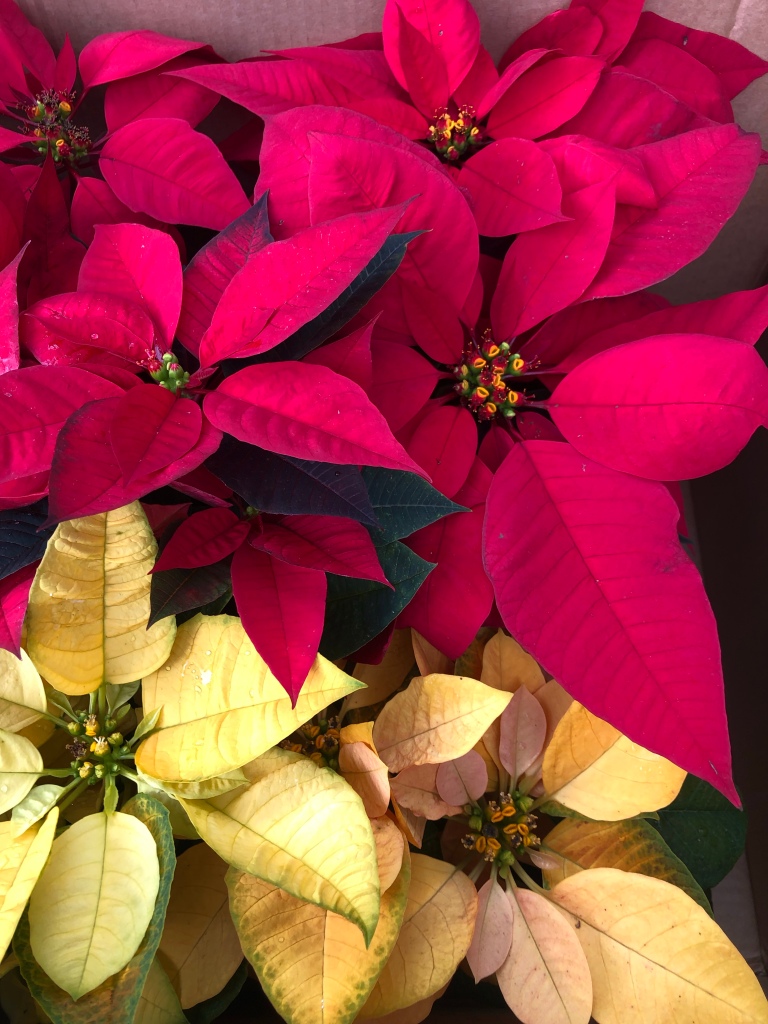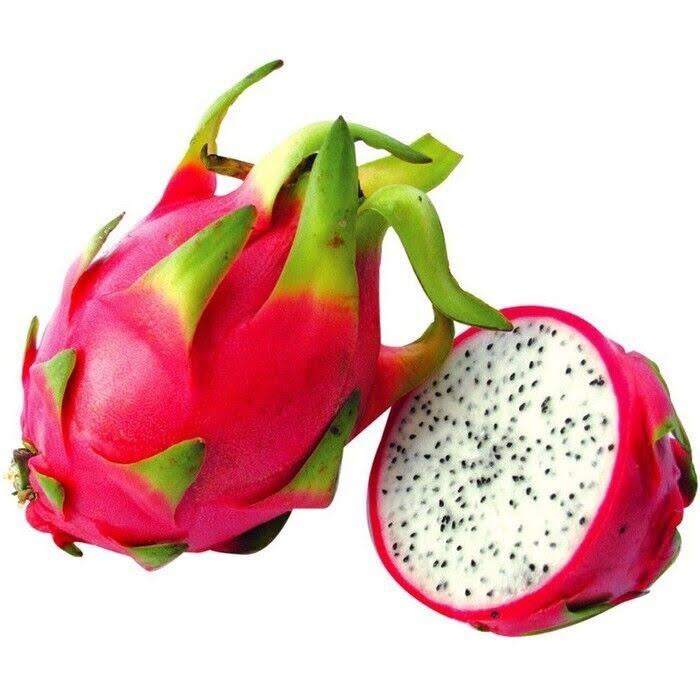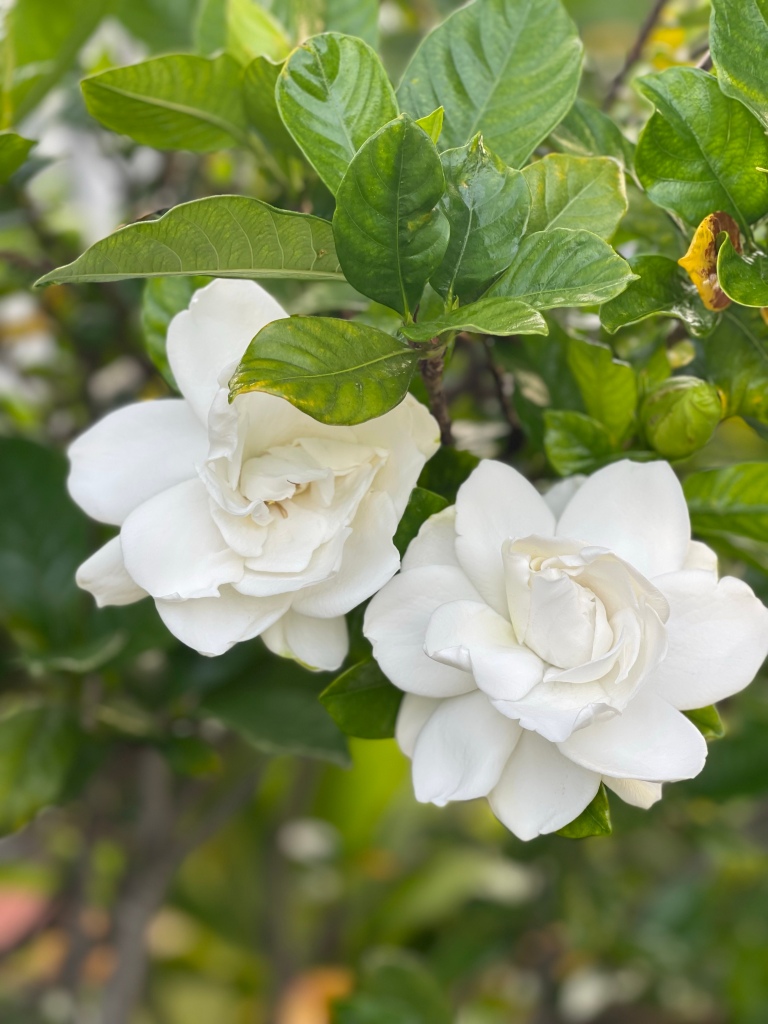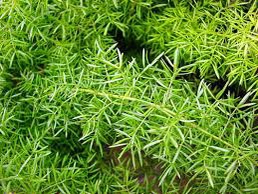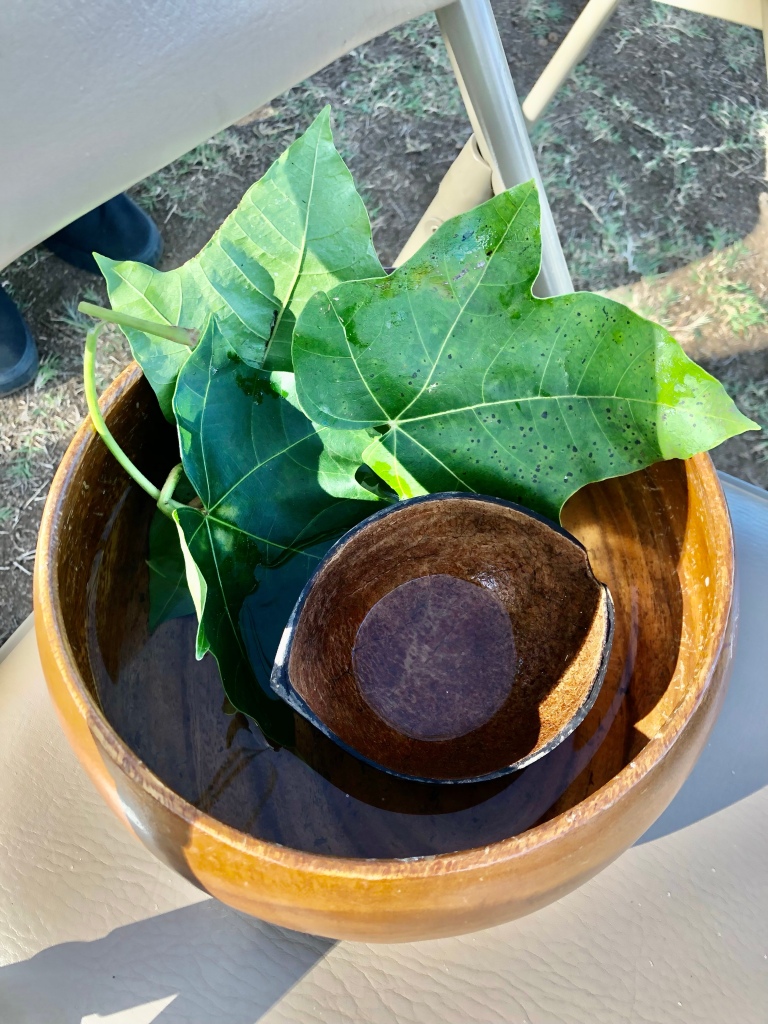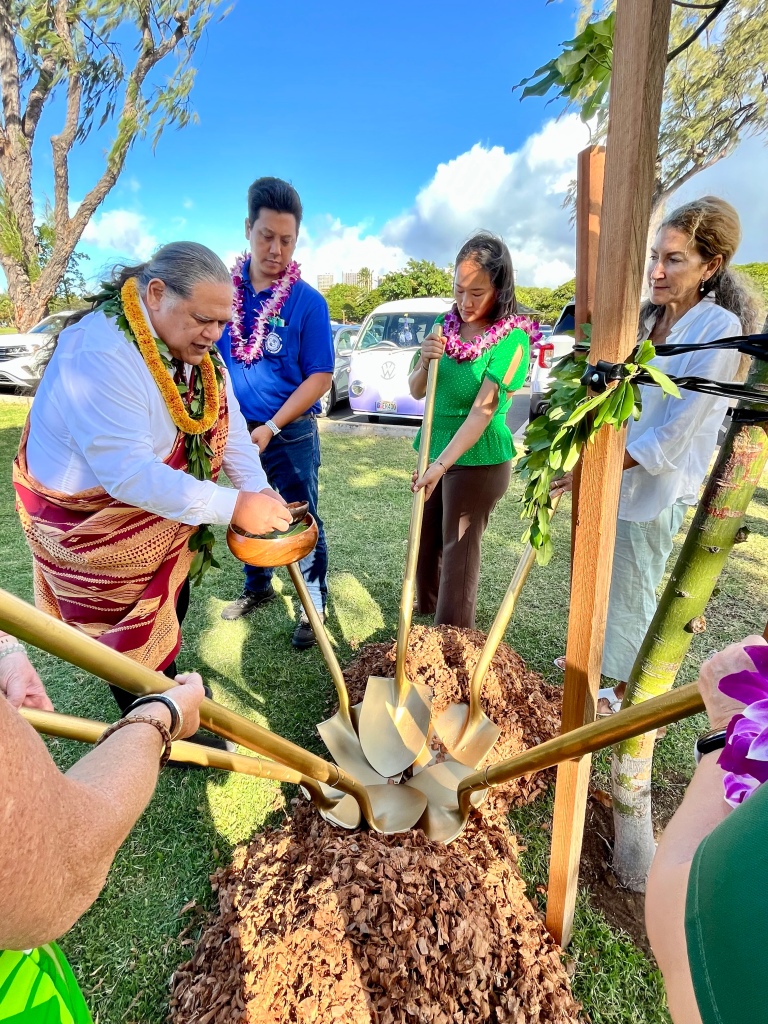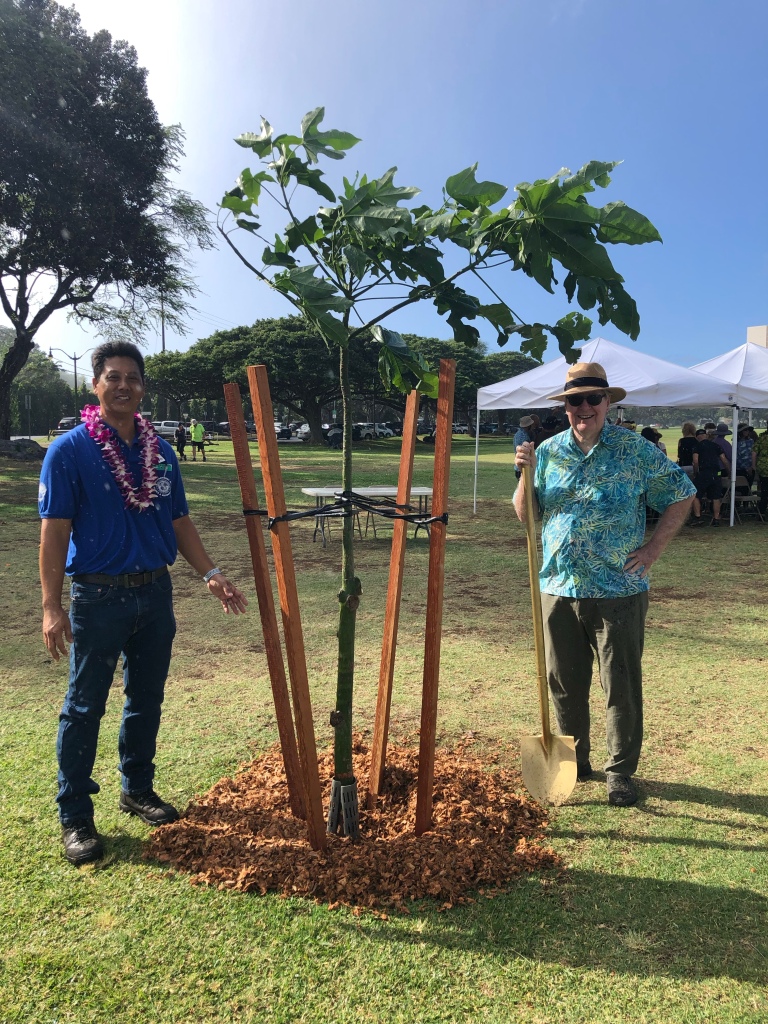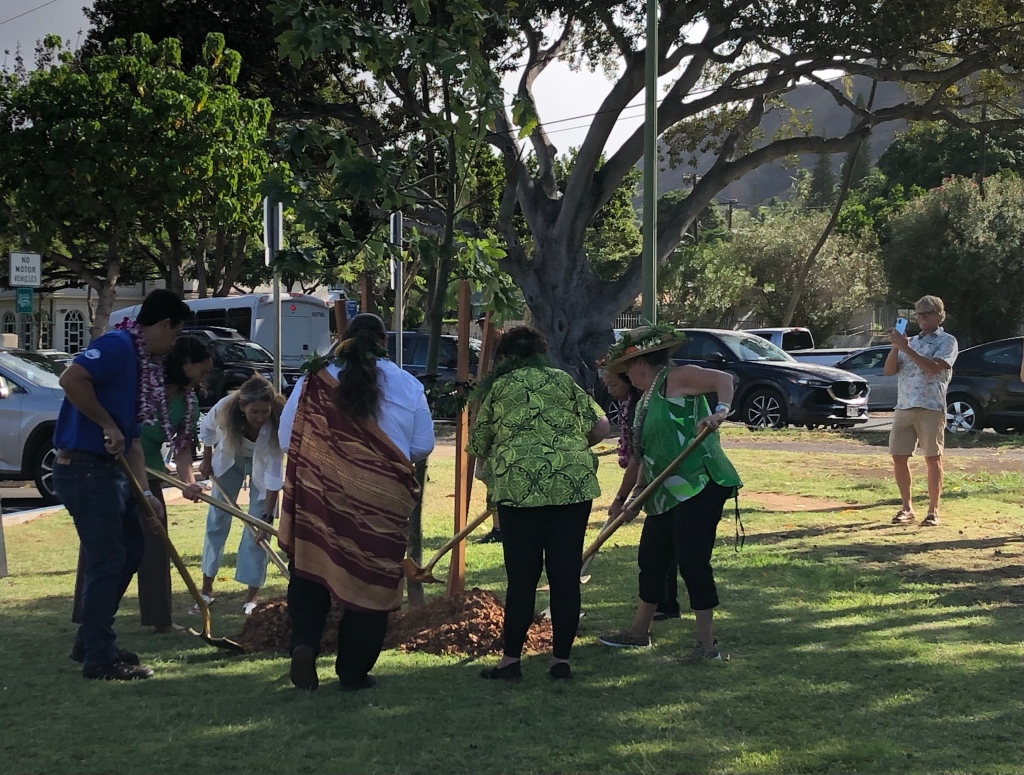By Heidi Bornhorst
Ren MacDonald-Balasia of RENKO did a Floral demo with the GCH on Wed March 13, 2024.
She likes to use wild, weird and foraged florals, and rare, strange fruit from gardens or Chinatown.
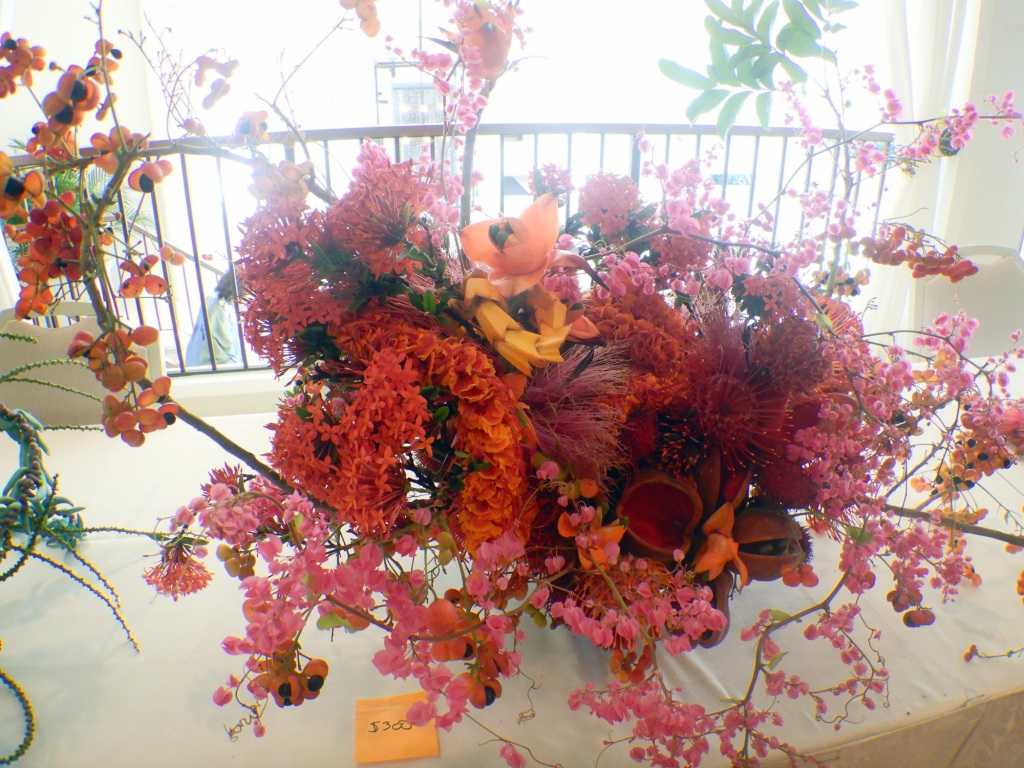
This was such an inspiration! We can all gather florals and foliage from our own gardens, from friends and even from wild weeds. Weeds can be beautiful.
We don’t have to import florals. Imported materials have a Carbon footprint big time. They also can be the source of harmful alien pests and diseases.
Many imported florals (e.g. roses without perfume) can last a long time, yet they are substantially dosed with chemical poisons insecticides and fungicides. Since they are not a food crop, they are not heavily regulated.
Some countries which grow imported florals don’t have the chemical safety regulations that we do, and this poisons the growers and us the consumers.
Read the Book Floral Confidential, if you really want to be informed (and Scared!) by this overuse of toxic chemicals.
And as we say: Buy Local! Or even better, Forage Locally. Glean from Local gardens.
The Floral event was at the Halekulani, and I invited my siter Mimi Bornhorst Gaddis.
As we were getting ready to go, my honey Clark Leavitt said, ‘set me up with a lei needle?’
He had gone on the roof and foraged for pua keni keni. So romantic. Our anniversary was the day before and he took his nephew Mark to lunch at Kailua Nico’s.
Mimi and I used the valet service at the Halekulani and walked through the flower filled lobby.
Two women were sitting in an alcove stringing Blue jade lei. “Wow kewl Blue jade!’ I remarked as we walked by (it turned out that these women were our speaker and her helper!)
We went to check in at the Garden Club desk, and as there was no usual flowers on second floor lobby, we walked around.
There was a woman sitting on a bench. Mimi and I introduced out selves and I gave her a tiare li`I li`i.
Her name was Pam and turns out she’s Ren’s mother, just home to care for her 97-year-oldmother who was a journalist for the star Bulletin.
The first AJA writer in Hawaii!
Soon the floral fun begins.
The first arrangement is in a wide tall bowl. She puts in what she called sea tamarind. We were in back and it was hard to see but I’m thinking that doesn’t look like tamarind. I kept trying to figure out what the orange bouncy floral might be. (Turnsout Harpulia, a common street tree in the Lychee family, Sapindaceae.
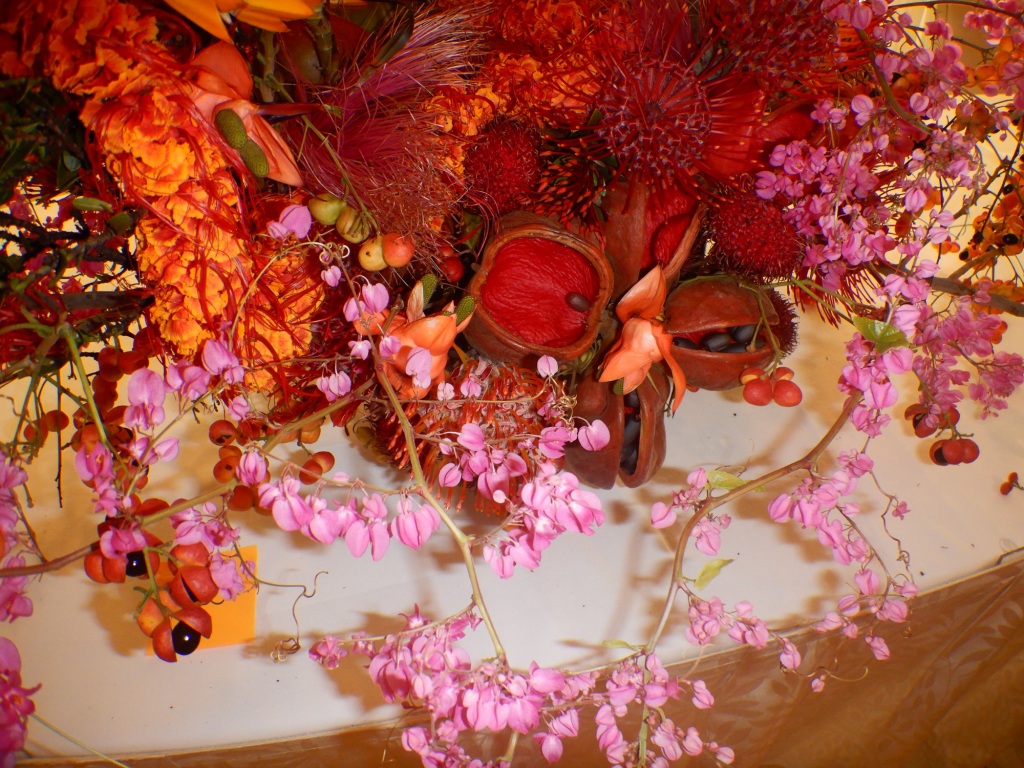
She anchors the branches into folded up chicken wire set in the bowl. (Oasis is environmentally out. Mimi and I both have some stashed, just in case)
She then added Sterculia, Skunk tree pods, these are heavy and help to weight the other materials down.
Ixora is added. We got these at a gas station, Ren remarks.
Mexican creeper, which used to grow in our Makiki garden is draped all around. She calls it coral vine.
Bombax or shaving brush tree flowers like big puffs of pink added to the flora mix, next the lei she bought at Cindy’s Lei in Chinatown are added, ohai alii and a golden hala. She cuts and drapes and winds them into the arrangement.
Blue jade lei were added and draped over the arrangement. Such a lovely seasonal Spring beauty from Hawaii gardens!
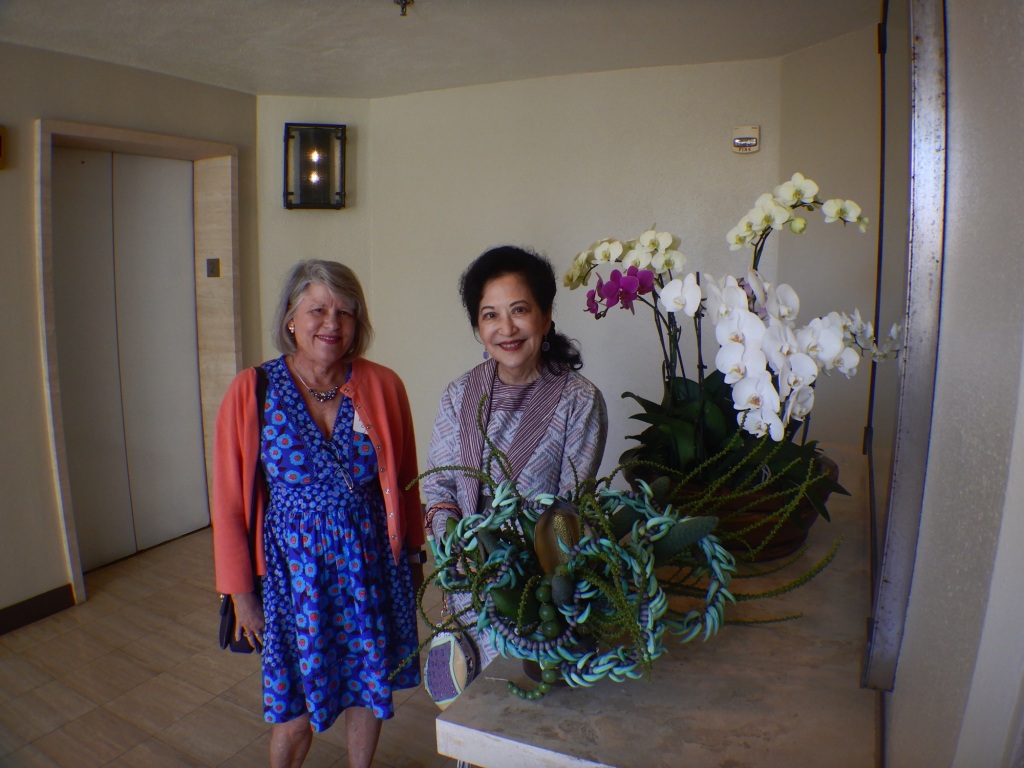
She scouted for wonderful and strange fruit in Chinatown markets:
Fruiting Clusters of Longan, rambutan and Salak palm. Mimi said that they call it SALAT in SE Asia and it’s really ono. Pretty and scaly in an arrangement.
She had some nice blooming orchid plants that she bought from Kawamoto orchids in Palolo Valley. We kind of gasped when she cut the floral stems and put them in the arrangement. (they would last for a month or more on the plant). But this is what florists do for that wonderful Ephemeral special occasion.
CONSERVATION: instead of imported, chemically laden treated florals these were gathered in gardens in wild places and in local lei shops.
Such a good message we can get so much from our own Hawaii GARDENS!

